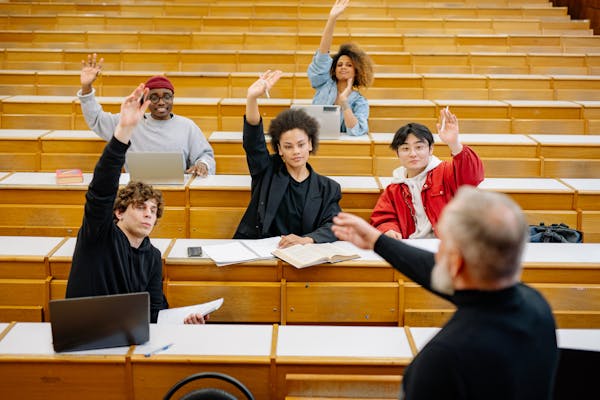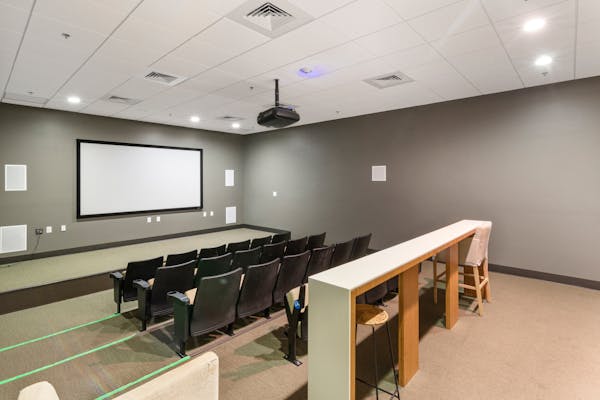
EdTech Tools for the Post-pandemic Classroom
Edison LuuThis article demonstrates practical tools along with principles that will redefine the classroom experience and enhance student engagement.
Social interactions amongst one another is an important aspect in a classroom environment. Students must build communicative relationships to better engage in their academic and social lives. Unfortunately for students and faculties around the world, the coronavirus pandemic struck the traditional classroom experience hard forcing everyone to transition to a virtual learning setting. Mentioned in an article by The New York Times, the writers stated, “even though schools have, with brief exceptions, been open this year, students have not yet made up the losses” (Miller, Pallaro, & Fang, 2022).
How can the classroom experience recover or adapt to new changes for both educators and students?
In traditional classrooms, educators are able to determine students’ emotions according to their facial expressions, body language, and communication. With virtual classrooms, students often shut off their cameras and educators are unaware of their presence other than the name of the student attending. Drastic downfalls in student engagement surfaces in tandem with the transition concerning family, educators, and the student themselves.
According to an article by The Chronicle of Higher Education composed by Beth McMurtrie, Maci Lyman, a third-year student at Doane University in Nebraska expresses her unknown anticipation of a typical college experience. “As she returned to the classroom, Lyman found that many professors had come to rely more heavily on technology, such as asking everyone to get online to do an activity” (McMurtrie 2022). The problem Lyman notices is the lack of student engagement those activities were missing out on. It wasn’t where students enjoyed completing the task or bonding moments to get to know each other.
Education is not just about planting knowledge in students’ minds. It is also about getting to know them as individuals. Understandably, the attempt to teach and connect students with one another is a challenge in itself to the educators. It is often burdensome and overwhelming (Singer 2020).
Below are four principles and practical tools that can be applied to post pandemic classrooms to increase motivation and student engagement through stronger relationships among the students, without burdening the educators.
Principle 1
Challenge students to open ended questions. This method of student engagement allows the class to share their point of views, thoughts, and ideas. A good example is AskClass. AskClass makes it easy for educators to begin their classes with questions, such as “What was the best travel experience you ever had?” or “What books are you reading these days?” In the beginning of any class, I often notice my peers on their phones waiting for lectures to begin. I was able to experience AskClass in one of my classes and it brought the liveliness to the room. Despite the class being virtual, students actually participated. By the end of the semester, students attended the class early, without initially being on their phone and were ready to engage in activities and discussions.
Principle 2
Create a space for high fidelity introductions. For students who suffer from anxiety, live classes may not appear to be the best option. Flipgrid can be applied to improve engagement in ways live classrooms cannot. The platform provides students with the ability to interact using video, while granting them the time they need to respond. This can help students feel more confident in expressing themselves and commenting on their peers’ videos. I had previously used Flipgrid to complete book reports for a class. It turned up more interesting analysis than just text contributions. Being able to see facial expressions is important to engagement because it exhibits a face to face like communication along with emotions in a student’s speech.
Principle 3
Allow students to articulate their ideas. Interaction with video is great for engagement, but how about interaction through inquiry based discussions? With critical thinking and writing skills applied, Packback provides students with motivation to input their thoughts into their questions and answers. A variety of questions asked by students will be posted for the week revealing choices to the same students on which they would like to answer. I found that the questions my peers are posting gained my interest. Therefore, I responded and shared my thoughts on the subject matter. I enjoyed reading other student’s comments to the question because it can correlate to mine. To open up discussions to anything sparks conversations naturally.
Principle 4
Open up to suggestions, feedback, and possible changes. Surveys, polls, and quizzes are often applied in any class, and students often despise them. With customizable themes, data collection, and its unique logic jumps, educators can create more distinctive surveys, polls, and quizzes to gather better insight. Signoff forms for students to input what they’ve learnt and discussed throughout the session were a part of my Typeform experience. In order to complete the Typeform, I needed to maintain engagement with the session. My professor was receptive to change and encouraged students to share their ideas for improvement. This is an excellent method for determining students’ expectations.
Clear progressive solutions are at the hands of educators. Grades only get students so far in life, whereas having connections will build relationships and careers. Through the difficult times educators and students are faced with, these EdTech tools are a big step in reestablishing the route to success for both parties. These online platforms can redefine what it takes to bond classroom environments.
 Creating a Better Workplace Culture Will Bring Your Faculty Back
Creating a Better Workplace Culture Will Bring Your Faculty Back
 A Look into Student Disengagement
A Look into Student Disengagement